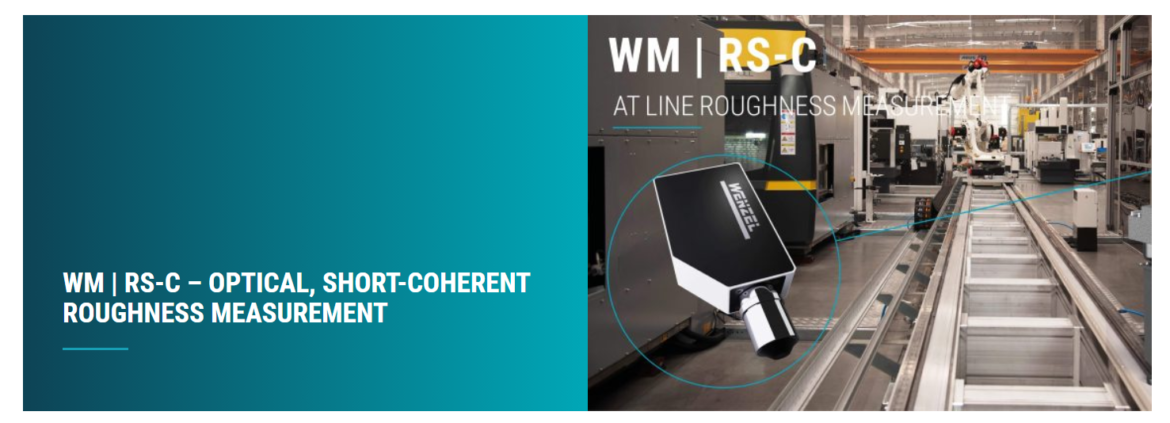In addition to dimensional accuracy and positional deviation, roughness is increasingly becoming the focus of quality assurance in the production of components. Functional properties and structures of component surfaces must be tested to ensure properties such as sealing, lubrication, friction, or wear behavior. For this reason, microscopic structures are increasingly measured in the CMM environment and characterized with the help of roughness parameters.
However, the known profile-based roughness parameters Ra and Rz provide only limited information due to the calculation method. Therefore, it is necessary to derive additional function-oriented parameters from measurement data based on material distribution analysis (e.g. Rk, Rpk, and Rvk) and to additionally consider 3D parameters (e.g. Sa or Sz). The latter has a clear advantage over the profile-based measuring principle of tactile probes due to the area-based measurement and better statistical evaluation. This is one reason why optics is gaining more and more acceptance in industrial applications.
In order to take this trend into account in the CMM environment, it is advantageous not only to determine shape and position deviations but also to be able to evaluate the surface quality microscopically within the framework of automated measuring processes. With the help of CMMs, a 3D reference to the workpiece or the production process is created and thus a reference to the component geometry is established. The new WENZEL sensor WM | RS-C is best suited for the use in this described application area.

For the non-destructive, optical measurement of topographies, the sensor has interesting unique selling points: The WM | RS-C is a plane measuring interferometer with FULL-HD resolution (1920 X 1080), which combines the extreme vertical resolution of an interferometer (in the nanometer range) with an extreme lateral resolution of only 55 nm (100X objective). The sensor is operated either with a piezo-electric actuator or an external actuator and can optically resolve the finest microstructures down to the physical diffraction limit. Such fine structures can by far not be detected with destructive measuring wands due to the Hertzian pressure and the morphological profile filtering (caused by comparatively large stylus tip radii of 2 to 5 µm). This fact makes the sensor interesting for numerous applications, such as the measurement of ground, polished, lapped, or honed surfaces. Applications from semiconductor technology, wafer production, technical micro-structuring, and medical technology round off the sensor’s range of use even in very demanding applications. Due to the two-dimensional measuring principle, the sensor also enables a much better statistical evaluation of surfaces compared to tactile measuring systems. This knowledge is gradually gaining acceptance in industrial applications and also influences, for example, roughness standardization (e.g. the standardization of 3D roughness parameters).
The WM|RS-C allows the measurement and export of topographies, point clouds, and triangulated STL nets with more than 4 million triangles per single measurement. The measurement data can be provided in a measurement time of less than 30 seconds. Finally, based on the measurement data, 2D and 3D roughness analyses are performed according to DIN EN ISO and roughness parameters are output as a report.

Another special feature of the WM | RS-C is its size, which was achieved by optimizing the beam path: The sensor is no larger than a commercially available smartphone and, thanks to its industry-standard Gigabit Ethernet interface, can be quickly and easily adapted to existing CMMs. New evaluation algorithms enable measurements to be taken even when the machine or the environment is vibrating, which promises enormous potential, especially in the manufacturing environment. Thus it is possible to operate the sensor also at CMMs like the WENZEL LH, the WENZEL CORE, or at robot arms in the store floor area. Thanks to optional CMM adaptation, it is also possible to establish a global coordinate reference between the microscopic topography and the coordinate system of the machine or workpiece. Consequently, multi-sensor applications at different scale ranges are also possible.
In addition to the technical aspects, the control and evaluation software of the WM | RS-C is another central element in practical sensor use: The sensor is operated with the WM | PointMaster software. This software provides a separate module for data acquisition and sensor control. The software also includes its own roughness and evaluation tool, which can be used to analyze surfaces for roughness in accordance with standards. With the help of the software, profile sections and spline courses can be defined interactively on the surface. Accordingly, roughness analyses are possible that goes far beyond purely linear evaluations. The implemented standards include DIN EN ISO 16610 (for filtering according to standards), DIN EN ISO 4287 (for calculation of roughness parameters such as Ra and Rz), as well as DIN EN ISO 13565 (for calculation of Abbott based parameters such as Rk, Rvk and Rpk). Furthermore, analyses of the measured point clouds or STL meshes (e.g. of micro surfaces) are possible without restrictions.
To know more, check Wenzel.









